Abstract
To study the information sources of psychiatrists, we sent a questionnaire to 400 randomly selected members of the American Psychiatric Association. Seventy-four percent responded. Journals and books (in that order) were the most important information sources. The average number of journals regularly read was 4.3. An average of 9.1 books had been read during the preceding twelve months. Twenty-eight percent of books were obtained through a library. Sixty-nine percent of the respondents use a medical library at least monthly. Important differences were found by type of practice. For example, academicians reported reading almost 19 books the preceding year; private practitioners, 6.4. We conclude that a major aim in the postgraduate education of psychiatrists should be instruction in the use of all information services. In addition, abstracts and an authoritative annual review should help psychiatrists keep up in areas outside their special interest.
Full text
PDF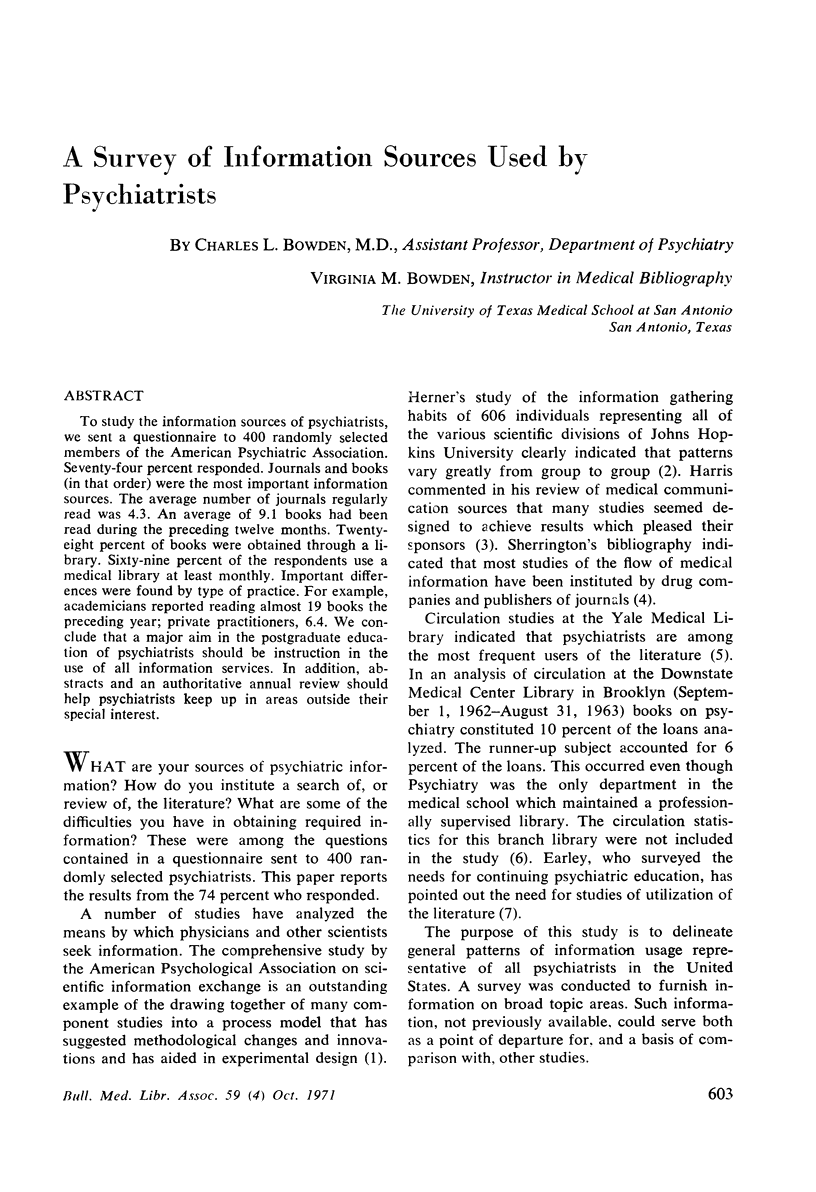
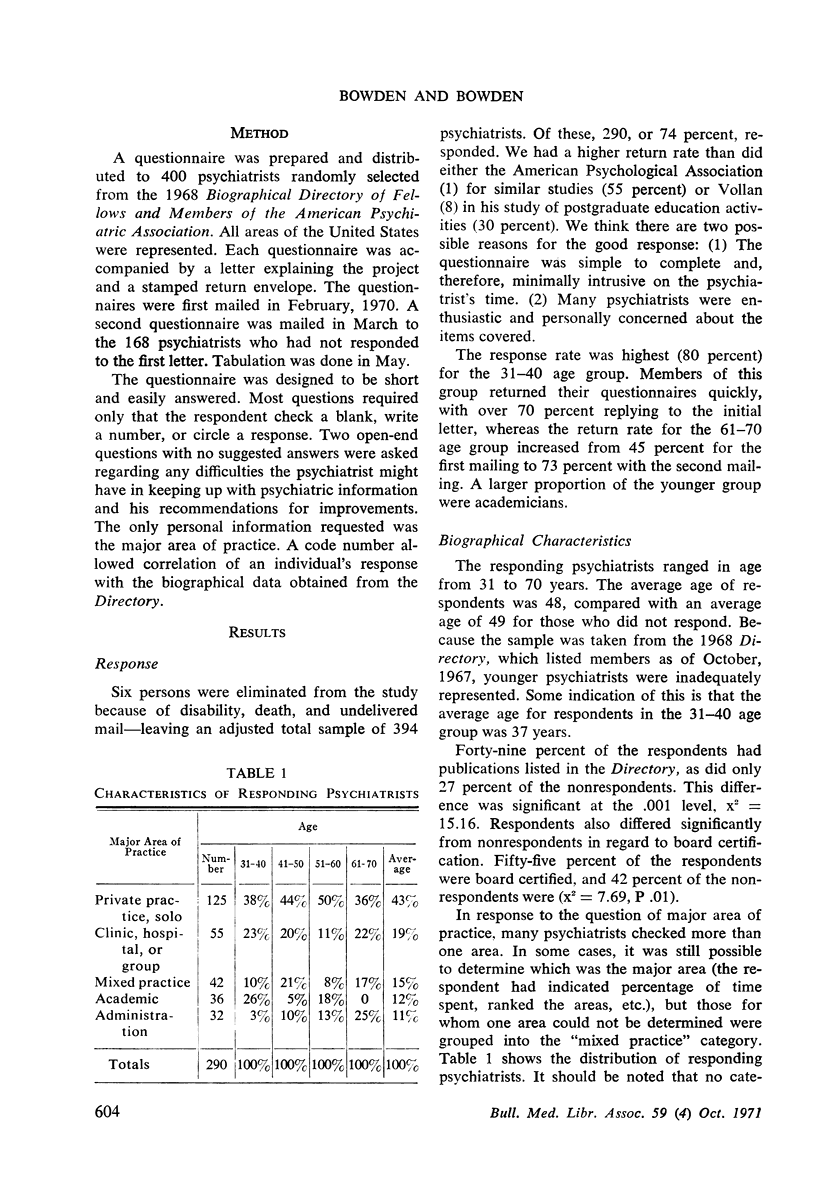

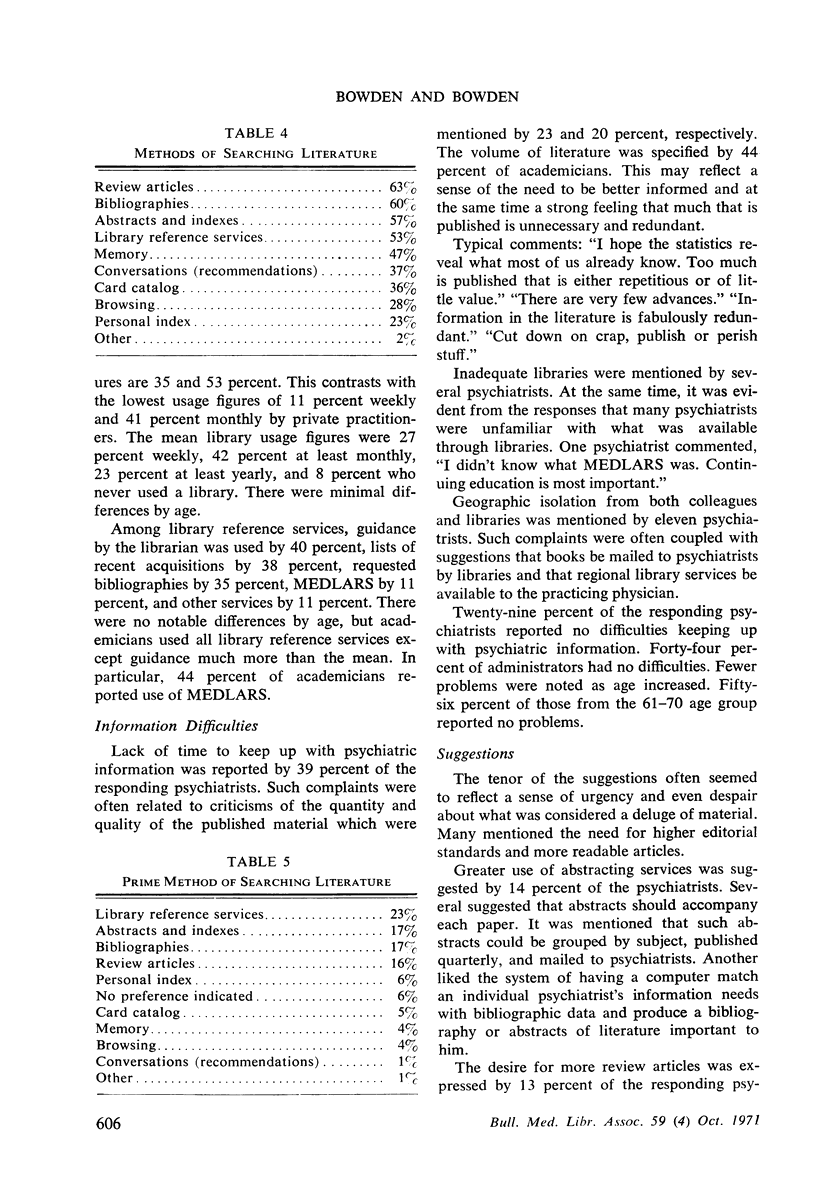
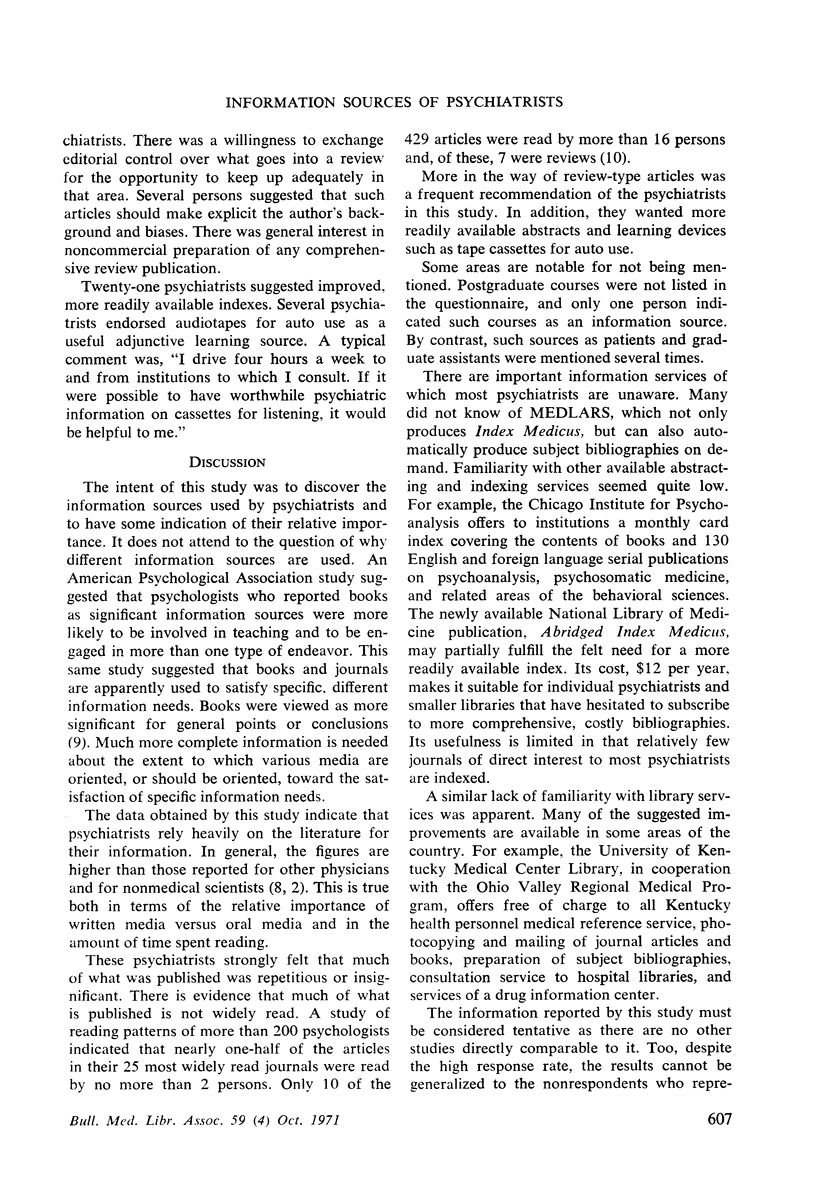
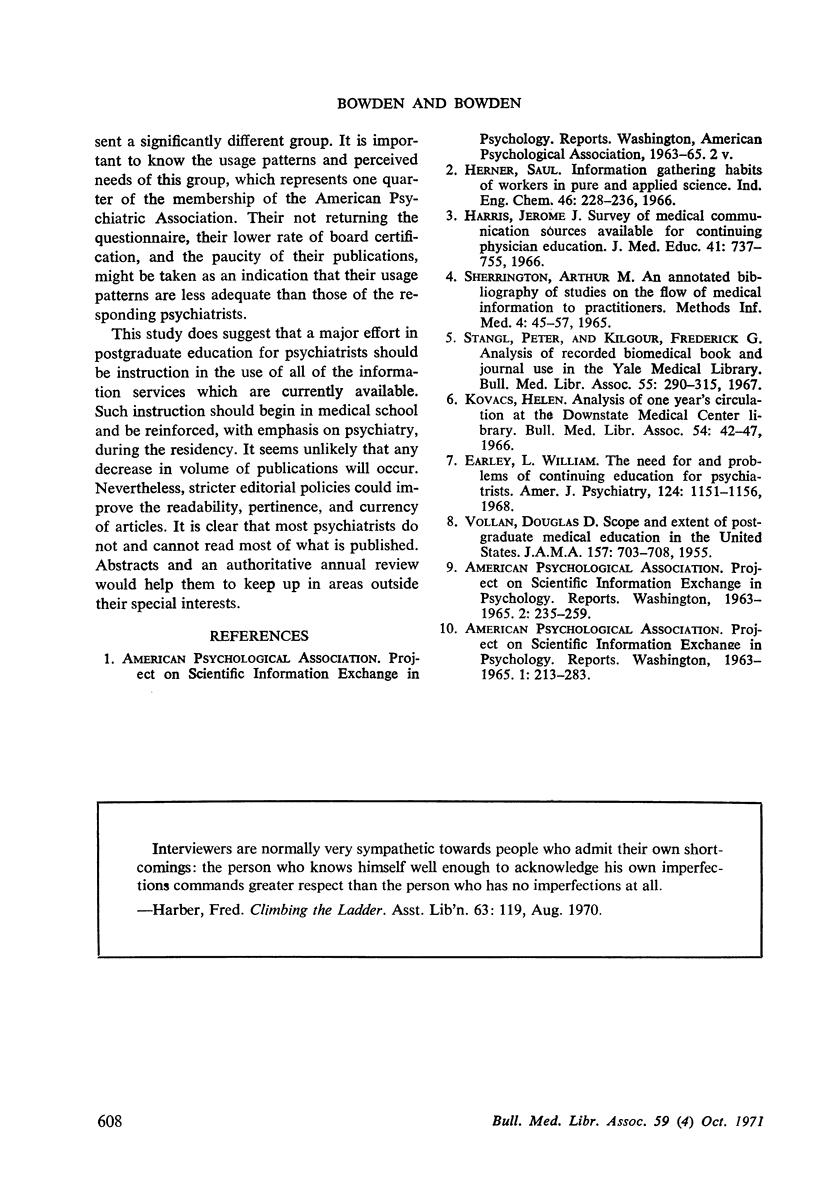
Selected References
These references are in PubMed. This may not be the complete list of references from this article.
- Earley L. W. The need for and problems of continuing education for psychiatrists. Am J Psychiatry. 1968 Mar;124(9):1151–1156. doi: 10.1176/ajp.124.9.1151. [DOI] [PubMed] [Google Scholar]
- Kovacs H. Analysis of one year's circulation at the Downstate Medical Center Library. Bull Med Libr Assoc. 1966 Jan;54(1):42–47. [PMC free article] [PubMed] [Google Scholar]
- SHERRINGTON A. M. AN ANNOTATED BIBLIOGRAPHY OF STUDIES ON THE FLOW OF MEDICAL INFORMATION TO PRACTITIONERS. Methods Inf Med. 1965 Mar;4(1):45–57. [PubMed] [Google Scholar]
- Stangl P., Kilgour F. G. Analysis of recorded biomedical book and journal use in the Yale Medical Library. I. Date and subject relations. Bull Med Libr Assoc. 1967 Jul;55(3):290–300. [PMC free article] [PubMed] [Google Scholar]
- VOLLAN D. D. Scope and extent of postgraduate medical education in the United States. J Am Med Assoc. 1955 Feb 26;157(9):703–708. [PubMed] [Google Scholar]


